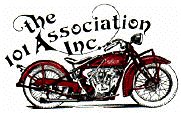The description you give or got from the seller isn't really clear and easy to interpret since the kicker and gearbox is mixed together in the description. You got a stub shaft for the kicker pedal lever and the gearbox has a mainshaft and the both is only connected when kicking with a set of gears, a ridgid segment on the kicker and a sliding gear on the gearbox mainshaft. The kicker lever stub shaft sits in the motorcycle frame in a cast lug, if it isn't a really early Scout 1920-21 that has the kicker stub shaft bolted to the gearbox? Or is the seller telling you that there is a problem with the gearbox main shaft or its sliding kicker gear?
Let's assume that it is the kicker that is the problem. The stub shaft is pressed in a hole in the cast lug and secured with a stop screw. If the kicker does not engage the gearbox sliding kicker gear there can have a multitude of problems there.
Easiest is is if the wrong year kicker lever is mounted. Kicker gear segment and gearbox gear is different in some years.
Next is if the stop ring for the kicker lever has popped out of its groove.
The kicker stub shaft stop screw can be loose and the shaft has migrated out.
Then you got if the gear teeth segment worn or broken so they don't engage.
The kicker lever hole can be worn oval.
Kicker lever stub shaft or kicker lever can be bent if the bike has fallen over at some time in history.
The cast lug for the stub shaft can be cracked so the stub shaft is loose.
The frame is bent so the engine is shifted.
That is for the kicker only, then you got problems with the gearbox on top of that
The sliding kicker gear can be worn or broken or stuck on the shaft.
The sliding kicker gear gripping clutch can be of wrong size or model.
The gearbox mainshaft can be bent.
The rear gearbox lug can be broken either in the frame or on the gearbox.
and there is for sure a couple of other potential kicker problems that I missed or forgot!
I found a good set of rules on the KIWI Indian Motorcycle News written by a John Arbeeny. Clever guy...
12 Laws Of Motorcycle Restoration
Personal reflections on 50 years of motorcycle restoration:
1. Everything is broken. Trust in this and you will never be disappointed.
2. Someone in the past has done something to the bike that has the potential to kill you. Your job is to find out what that is and fix it before it does.
3. Don’t believe the “for sale” ads: be prepared to be very disappointed when you actually see the bike in person and up close. A claimed “rebuilt engine” means the sparkplugs were changed….maybe.
4. Get the manual before you do anything. You have no business touching the bike until after you have read the manual cover to cover……several times.
5. There is no substitute for the right tool. Break down and buy one since you’ll probably need it more than once.
6. Nothing on a motorcycle requires the use of a hammer. Anything struck with a hammer will break regardless of how lightly hit.
7. Dealers will not have the part you need for your bike. Dealers will have plenty of parts you don’t need since they are the ones that never break.
8. You can never tell what a part is going to cost. Expect to be surprised both ways.
9. A failing $1.00 part is capable of destroying a $1000.00 engine. Always replace the cheap stuff (gaskets, o-rings, springs, etc.) whether it needs it or not.
10. There are some bikes that are not a bargain even if you get them for free. Pass them by unless you already own one and need a “parts bike”. See #11 below.
11. There is no such thing as a “parts bike”. All the parts you will need for your bike will already be broken or have been stripped off any “parts bike” since they are the first ones to break. See #10 above.
12. If your bike is older than the age of the dealer’s mechanic you are probably a better candidate to restore your bike than the dealer’s mechanic. Be prepared to do it yourself.
John Arbeeny


